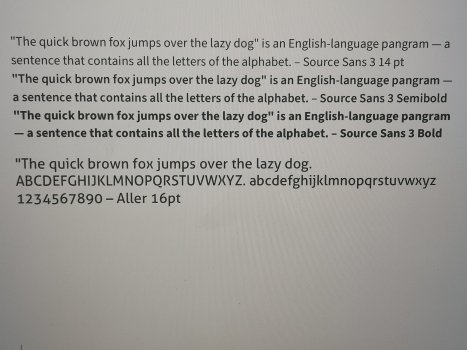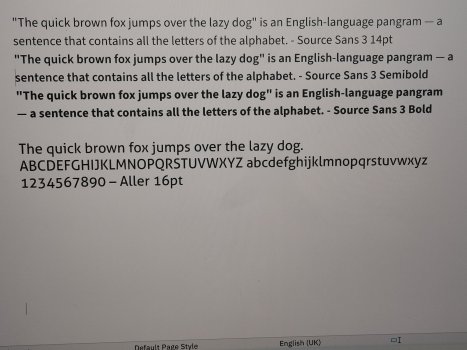@tornado99 Where did I ever row back, my statements stand, you are incorrect about text being gamma corrected everywhere on Linux while both web browsers (and hence any electron-based app) and GTK still have no gamma correction. You are also incorrect assuming that the 5-tap custom filter hack is proper gamma correction because it lacks the alpha blending part which is essential.
Like for real, if you know anything about gamma, you wouldn't say that it's nonsense, you don't even have to take my word for it, in fact, if you did less than a minute of research and RTFM, you can find this page about stem-darkening on freetype's website... Just Ctrl+F "frail". It also goes into detail about everything i talked about and refers to alankila's page I linked earlier, which contains a test render so you can see the difference for yourself.
Moreover, lack of gamma correction on Linux is the exact reason stem darkening comes disabled OOB. As enabling it without gamma correction results in a huge mess, here is a direct quote from the freetype page I linked above: -
Anyway, I am sorry to burst your bubble, you seem to have been using chromium all this time thinking it is gamma corrected until I pointed it out, I can only imagine how awful your text must have looked with stem darkening without any gamma correction. But hey, just build chromium from source.
Sorry but this is nonsense. With a little research into how to configure Freetype you get nothing like this. I have perfectly balanced text on 1080p, QHD, and 4K systems. I have this in my etc/profile.d/freetype2.sh for a QHD monitor.
Like for real, if you know anything about gamma, you wouldn't say that it's nonsense, you don't even have to take my word for it, in fact, if you did less than a minute of research and RTFM, you can find this page about stem-darkening on freetype's website... Just Ctrl+F "frail". It also goes into detail about everything i talked about and refers to alankila's page I linked earlier, which contains a test render so you can see the difference for yourself.
Moreover, lack of gamma correction on Linux is the exact reason stem darkening comes disabled OOB. As enabling it without gamma correction results in a huge mess, here is a direct quote from the freetype page I linked above: -
No library supports linear alpha blending and gamma correction out of the box on X11. Turning on stem darkening leads to heavy and fuzzy looking glyphs as in “Gamma 1.0, darkened” above, so it’s better to disable it.
Qt5 actually had gamma correction enabled for a short time while until someone complained that text was too light and unlike rendering in other toolkits, so the maintainers disabled it for the XCB-backend. Skia (Chrome) can do gamma-correction but turns it off for X11.
Anyway, I am sorry to burst your bubble, you seem to have been using chromium all this time thinking it is gamma corrected until I pointed it out, I can only imagine how awful your text must have looked with stem darkening without any gamma correction. But hey, just build chromium from source.
Last edited:



